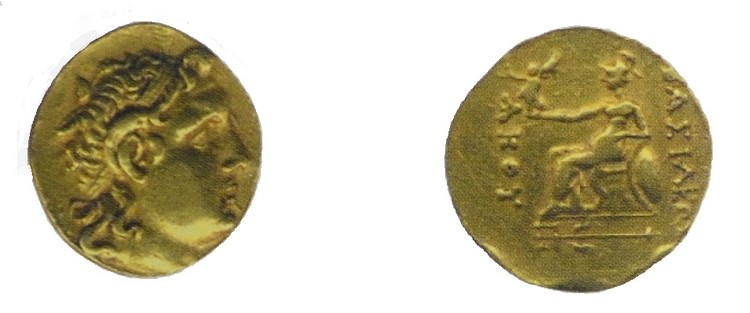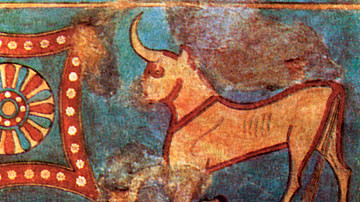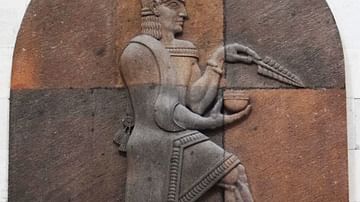Colchis (western Georgia) and Kartli/Iberia (eastern and southern Georgia) were important regions in the Caucasus area of Eurasia from the Bronze Age of the 15th century BCE. Prospering through agriculture and trade, the region attracted Greek and then Roman colonists. The success of several cities is indicated by the minting of their own coinage. The languages, religion and arts of the region reflect the cosmopolitan political reality through the Hellenistic and Roman periods.
Geography
Georgia extends southwards from the Caucasian range and eastwards from the Black Sea, which has served as a highway to the rest of the world since antiquity. Georgia contains all the principal landforms like plains, hills, plateaus and mountains. Climate varies across the country. Much of the Black Sea coast has a humid subtropical climate with warm winters and plentiful rainfalls. Having a semiarid climate, East and South Georgia receive little rainfall and so farmers have to rely on irrigation. The mountains possess a highland climate. People make their living by herding and cutting timber. Some rivers are navigable, while fast-flowing streams provide effective power. Georgia had rich deposits of iron, copper and other minerals although now they are mostly emptied. Deposits of oil seem not to be prominent.
Names & Languages
The West was Colchis; and the East and the South Kartli, the Greeks called it Iberia. The native name "Kartli" is of Indo-European provenance and means "citadel". When a lord of this "citadel" near the Georgian city of Mtskheta became a ruler of the whole country, this term spread over the entire territory. And for the Greeks living in the neighbouring Trebizond, the closest Kartlian province was that of Speri (now Ispir in Turkey). The Greeks used various names for these peoples, calling the Kartlians "Sasperians", then "Hesperians", and then "Iberians". The term "Colchis" seems to be derived from the name of the mountainous province of Kola (now in Turkey) while Georgia (Sakartvelo) is an economic synthesis of the West and the East. The native name has been derived from Kartli.
Georgians speak the languages of the Ibero-Caucasian family which are as follows: Georgian properly, Mingrelian and Svanetian. Ancient Georgia was formed by an economic synthesis of the East (Iberia) and the West (Colchis), and since then the Mingrelian (i.e. Colchian) language has been transferred to a position of a family language. A bit earlier the Svanetian and the Abkhasian languages were put on the same position by the Mingrelian language.
Agriculture
Rich soil, rivers like the Rioni, Chorokhi and Mtkvari (Kura) filled with fish, and besides a ready source for irrigation, helped the early settlers to raise grains. The most successful farming settlements had grown into powerful clans. Crafts and trade flourished across wide areas. In the early centuries of the 2nd millennium BCE two principal economic systems were created. Later they will be called Colchis and Kartli. The Georgian clans are best known in history for their mastery of bronze and iron. The Bronze Age civilizations, which endured and developed over two millennia, gave place to Iron Age communities c. 1000 BCE.

The prosperity of the Georgian clans was linked with the possession of the rich valleys of the rivers Mtkvari (Kura), Chorokhi (Aphsaros/Acampsis) and Rioni (Phasis). Agriculture was important and could find a market for its produce in the small towns scattered around. Wherever irrigation had to be maintained (Kura-river valley), channels were built.
Contact with Greece
A well-planned system of defence – small states like Diaokhi (Tao) and Colcha etc. being allied – lessened the risk of enemy raids. Corn-fields were cultivated, flocks of sheep and herds of cattle roamed in the upland – on the slopes of the North and South Caucasian Mountains, which provided some more safety to the area. Still, the Greeks managed to arrange naval expeditions against the East Black Sea Coast, and those were augmented by the myth which told of how a brave Hellenic crew – the Argonauts – headed by Jason, stole the Golden Fleece, an obvious symbol of luxury and abundance, from Colcha/Colchis. Another violator in mythology was Prometheus, who seized fire from the gods and gave it to humanity. He was then punished and chained to a rock in the Caucasus. The Georgian version of the myth names Amiran as the hero who is reminiscent of Mithra, the Arian pagan deity or devi – indeed, the Arian clans came to the region at the dawn of the civilization and then mingled with the natives.

Early States
The powerful clans set up small states like Diaokhi, Zabakha, Viterukhi, Colcha etc. as far back as the 12th century BCE. Kings ruled and made the law, while wealthy landowners held public offices, and fought Assyrians and Urartians, moving northwards. At the bottom of the society were the common people. They worked on lands belonging to the aristocracy but were still free to leave this land, and yeomanry dwelt in the high-up mountains. Increased trade led to the growth of the towns. The merchants gained some wealth and began to form a middle class. Women were subordinated to men.
Two cultures, armed with iron, are established finally – East Georgian (Iberian), in the valleys of the rivers Mtkvari and Chorokhi; and West Georgian, Colchian (i.e. Mingrelian), in the valley of Rioni, in the plains between the cities of Pitius (Bichvinta/Pitsunda) in the Northwest, Aphsaros (Gonio) in the Southwest and Sarapanis (Shorapani) in the East. Tough mountain folks like the Svani and Lazi (West Georgians) lived in the wild regions above the cities of Dioscurias (Sokhumi) and Trapezus.
Greek Colonies
By the 6th century BCE, the Persians had conquered a vast empire that stretched from Asia Minor to the Indus valley. Some of the Iberian lands were under Persian rule but still, the world was now facing a new hegemonic power – Hellas, already overpopulated and needing grain and raw materials to be imported. The Greeks set up small city-states (poleis) along the Black Sea coast. They earned a living through commerce, supplying the parent country with raw materials. Milesians from Asia Minor also established several colonies in Colchis, comprising West Georgia.

In the 7th-6th century BCE the Ionian city of Miletus possessed exceptional wealth and commercial enterprise. Miletus, the greatest trading city, organized the first Greek settlements in Colchis, daughters of the Ionian metropolis – Phasis (Poti), Dioscurias (Sokhumi) etc. Phasis and Dioscurias were splendid Greek cities dominated by mercantile oligarchies, although they were sometimes troubled by the Colchians from the hinterland. These Greek cities seem to have been completely assimilated by the Colchians.
In subsequent centuries the same process happened with the settlement of Roman veterans near Phasis. To promote trade, Phasis issued its own silver money with the Graeco-Colchian type of coins. Trade of the peoples across the Black Sea thrived. The armament industry and ceramic production flourished in Pontus, mining was productive in Colchis, and agriculture in the Bosphorus area. Almost everywhere town increased in size and prosperity. Large and frequent issues of coins became necessary and their circulation increased. The age-old maritime route from Sinope towards Phasis was easily covered in three days. From the 3rd century BCE the Greeks flooded into and through Colchis and Iberia. Spices, precious woods and stones came from India via the cheap “Transcaucasian” river-route along the rivers of Indus – Balkh (Bactra) – Amu-Daria (Oxus), joining in the past, the Caspian Sea in the Southeast section, Mtkvari and Rioni.
Alexander the Great
Alexander of Macedon defeated the powerful Persian Empire in the 4th century BCE. His conquest paved the way for the penetration of the Greek civilization in many areas. The whole Black Sea area might be looked upon as a multicultural region of which the economic systems were ultimately based on the principle of Hellenism – Greeks settled everywhere. An idea of Hellenistic integration is reflected in the Colchian imitation of the gold coins of Alexander. More and more Greeks arrived in Colchis. Colchis was well packed with naval resources and the best sailors but in many lowland places there were terrible marshes, and the Greeks had no special idea about draining those marshlands. Ultimately, Hellenism in Colchis failed because the Hellenic communities first became bilingual and then completely assimilated into the local societies.
After the destruction of the Persian Empire, the Northern and Southern kingdoms of Kartli were united under Pharnavaz from Mtskheta (Northern kingdom), the first king of the Pharnavazid dynasty. Azo, the Southern sovereign, seems to have been killed in a skirmish. Pharnavaz gratefully adopted his sons and kept them within the native domains as dukes (eristavi). After many centuries those domains will provide Georgia with a new royal dynasty, the Bagratids (Bagrationi).
The Roman Empire
Starting from the 1st century BCE the Romans administered the old Hellenistic World. They promoted European unity by offering citizenship to their allied kings. Iberian rulers were among them. Roman citizenship was a traditional honorary degree passed from the European principal domains towards the provinces, the countries being tied up formally. A silver cup of the 2nd-3rd century CE records a name of the Iberian (Kartlian) king Flavius Dades (reign dates unknown). Evidently a Roman citizen, he inherited his citizenship from a predecessor upon whom either Vespasian or Domitian had conferred it. In another example, the citizenship of Publicius Agrippa, an Iberian commander-in-chief, derived from a grant of C. Publicius Marcellus, Hadrian's governor of Syria. Sometimes the high jobs in the Roman army went also to Iberians. For example, the appointment of a capable admiral is recorded in the times of Emperor Otho. His name was Moschus, and obviously, he was born in the Iberian province of Meskheti.
While sending the men to serve outside the land, Iberia welcomed some foreigners - already in the 2nd century BCE the capital Mtskheta had its mercantile Jewish quarter. And the Colchians faced Roman garrisons stationed along the Black Sea coast. Goths, dwelling in the Crimea and looking for new homes, raided Colchis in 253 CE. Still, the country was not against any reception, whenever demanded. Colchians were always watchful of the mountaineers North of the Caucasian Range but in the 1st century CE they did not reject the opportunity to gain more recruits for the feudal class. Thus Abasks and Aphsils appeared in Colchis, together with a sizeable Lazi population from South, who renamed the land Lazica. During this slight Roman hegemony the waves of Lazi clans from Trapezus, speaking the same Mingrelian language, swept Colchis to create a new feudal structure. Soon Iberia exercised the same system.
Culture
Artistically and intellectually the period is outstanding as a starting point. Greek style temples were built both in Colchis and Kartli (Iberia). In Ancient Colchis and Kartli folk believed that many gods controlled the forces of nature. Idols were worshipped but the latter's paganism is still imbued with a certain romanticism due to Aryan superstrata coming to Iberia at the dawn of civilization, bringing their pagan deities (devi – in Georgian) like Mithra-gayo-da (the life-giving one; Gaim – in Georgian) and Aredvi Sura Anahita (Ainina in Georgian). The next reception included already those who worshipped the Lord Wisdom, a pure idea – Ahuro Mazdao, which was paganized in Georgia and converted into the warrior-Armazi. So, this Armazi, together with Gaim and Ainina were worshipped in Kartli, before this country had been baptized. Colchian jewellery is also very multicultural and the Georgians used to write in Greek and Aramaic. Georgian records are accurate describing the crowded pagan festival in Mtskheta, with the king himself as a participant. Armazi was widely worshipped, while archaeology reveals plenty of skulls in burials with a coin set inside – a dead man is thought to be transferred to another world by the mystic paid boatman, Charon, and the normal place where people carried money was in the mouth.









